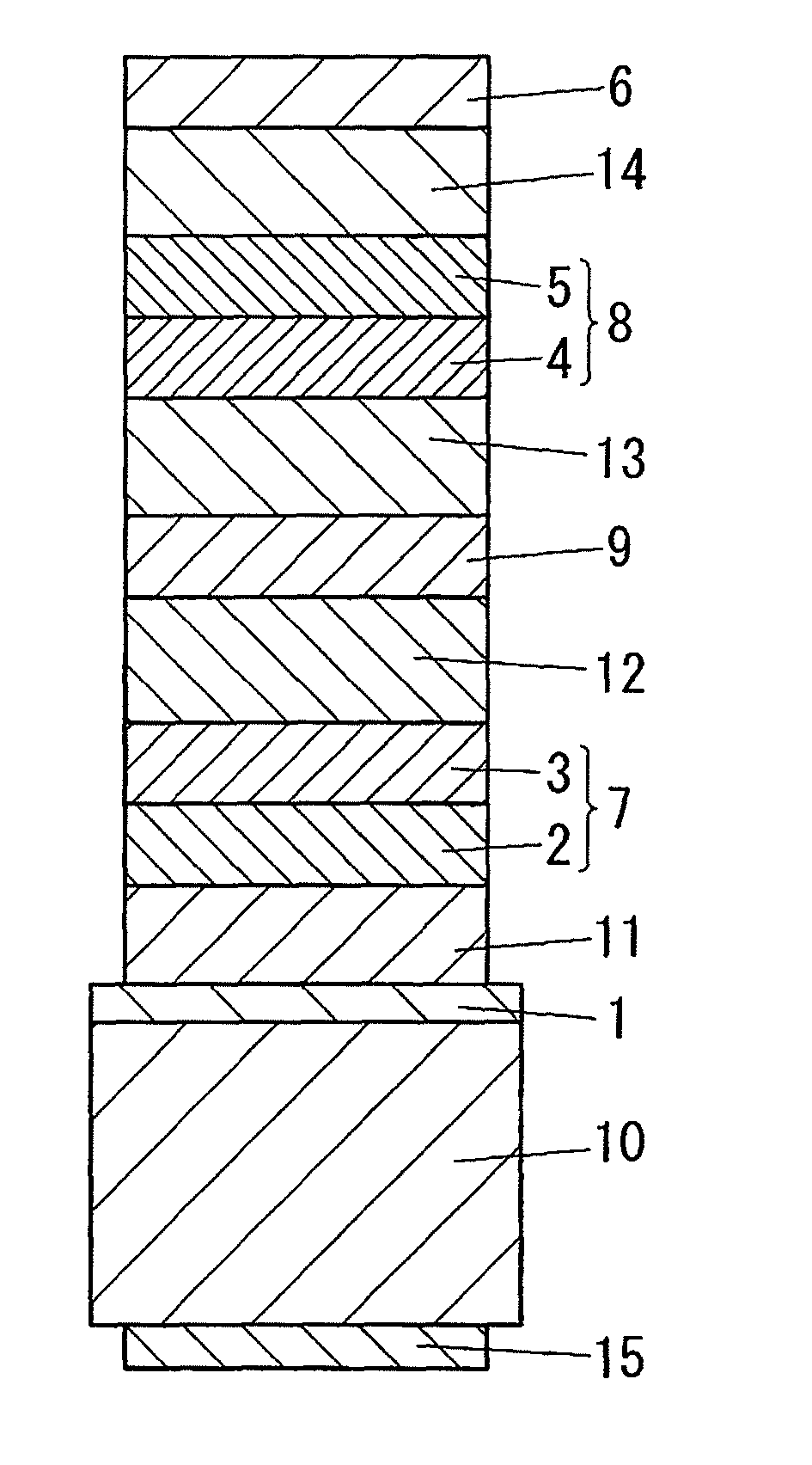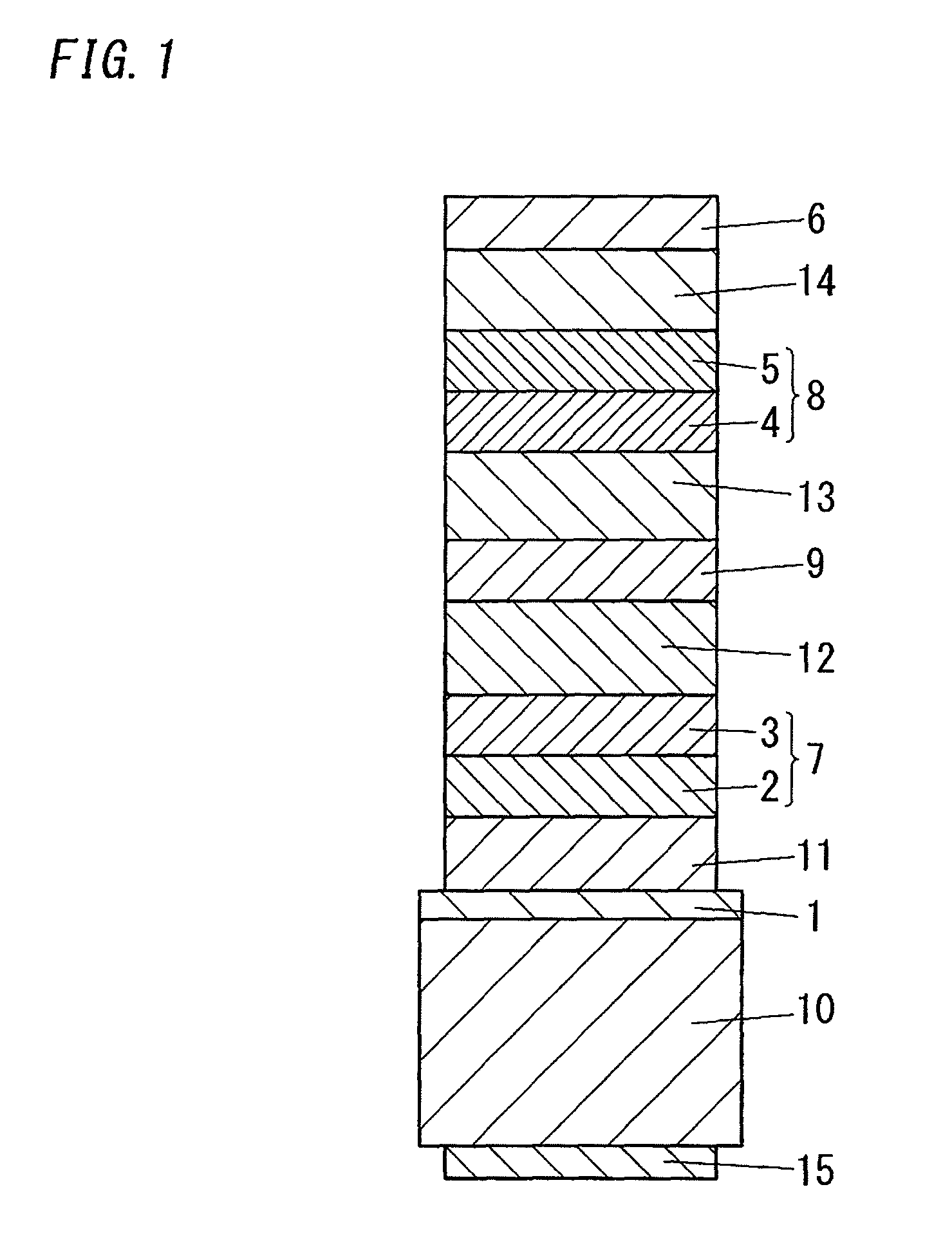Organic electroluminescent element
a technology of electroluminescent elements and organic materials, applied in the direction of solid-state devices, semiconductor devices, thermoelectric devices, etc., can solve the problems of unbalanced efficiencies of respective units, change the structure of light-emitting materials, and the inability to realize sufficient improvement in color rendering properties, etc., to achieve high color rendering properties, long life, and high efficiency
- Summary
- Abstract
- Description
- Claims
- Application Information
AI Technical Summary
Benefits of technology
Problems solved by technology
Method used
Image
Examples
example 1
[0054]An organic electroluminescent element having a multiunit structure as shown in FIG. 1 was prepared. Specifically, a transparent electrode 1 was formed by depositing ITO with a thickness of 130 nm on a substrate 10 (a glass substrate). A first hole transporting layer 11, a blue fluorescent light-emitting layer 2 (containing BCzVBi as a blue fluorescent light-emitting material), a green fluorescent light-emitting layer 3 (containing TPA as a green fluorescent light-emitting material) and a first electron transporting layer 12 (CBP) were further formed by a vapor deposition method with a thickness between 5 nm and 60 nm on the transparent electrode 1 in this order. Next, an intermediate layer 9 having a layer structure of Alq3 / Li2O / Alq3 / HAT-CN6 was stacked with a layer thickness of 15 nm. Then, a second hole transporting layer 13, a red phosphorescent light-emitting layer 4 (containing Ir(piq)3 as a red phosphorescent light-emitting material), a green phosphorescent light-emittin...
example 2
[0056]An organic electroluminescent element was prepared in the same manner as in Example 1, except that the film thickness of the blue fluorescent light-emitting layer 2 was set to 15 nm, the film thickness of the green fluorescent light-emitting layer 3 was set to 15 nm, the film thickness of the green phosphorescent light-emitting layer 5 was set to 15 nm, and the film thickness of the red phosphorescent light-emitting layer 4 was set to 15 nm. White light having a color temperature of 4000 K is obtained.
example 3
[0057]An organic electroluminescent element was prepared in the same manner as in Example 1, except that the film thickness of the blue fluorescent light-emitting layer 2 was set to 25 nm, the film thickness of the green fluorescent light-emitting layer 3 was set to 5 nm, the film thickness of the green phosphorescent light-emitting layer 5 was set to 0.30 nm, and the film thickness of the red phosphorescent light-emitting layer 4 was set to 10 nm. As a result, white light having a color temperature of 5000 K is obtained.
PUM
 Login to View More
Login to View More Abstract
Description
Claims
Application Information
 Login to View More
Login to View More - R&D
- Intellectual Property
- Life Sciences
- Materials
- Tech Scout
- Unparalleled Data Quality
- Higher Quality Content
- 60% Fewer Hallucinations
Browse by: Latest US Patents, China's latest patents, Technical Efficacy Thesaurus, Application Domain, Technology Topic, Popular Technical Reports.
© 2025 PatSnap. All rights reserved.Legal|Privacy policy|Modern Slavery Act Transparency Statement|Sitemap|About US| Contact US: help@patsnap.com



